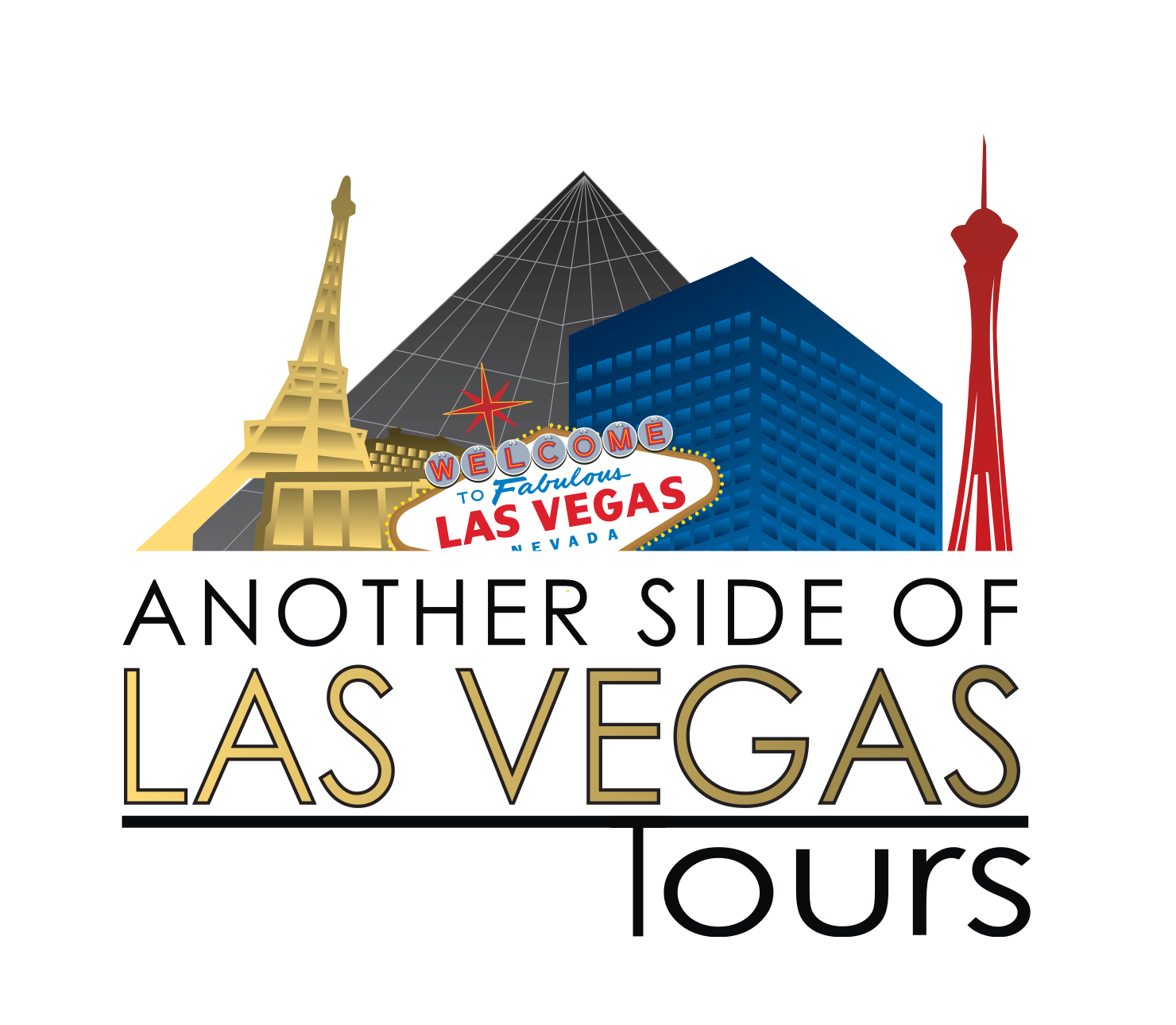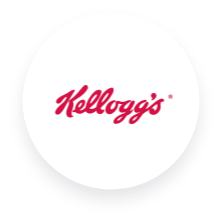Death Valley is a land of superlatives. It’s the hottest, driest, and lowest place in North America, and that combination has created a landscape you won’t find anywhere else on Earth. Here, you can walk across salt flats 282 feet below sea level, drive through canyons painted in pastel hues, and see mountains tower over golden sand dunes. It’s a place of raw, untamed nature that feels both ancient and alien. A Death Valley day trip from Las Vegas is your ticket to exploring this incredible world of extremes. We’ll cover all the must-see spots and provide the practical advice you need to explore this unique national park safely and confidently.
Key Takeaways
- Visit during the cooler months: Plan your day trip between October and April to avoid the dangerous summer heat and enjoy comfortable weather for exploring the park’s landscapes.
- Pack for self-sufficiency: Arrive with a full tank of gas, bring more water and snacks than you think you’ll need, and download offline maps, as services and cell reception are extremely limited.
- Decide how you want to explore: A well-planned itinerary is essential for a day trip. Driving yourself offers freedom, while a private tour ensures you see all the highlights without the stress of planning and navigation.
Why Death Valley is the Perfect Day Trip from Vegas
When you think of Las Vegas, you probably picture bright lights, bustling crowds, and non-stop action. But just a two-hour drive away lies a world of stark, silent beauty that feels like another planet entirely. Death Valley National Park offers one of the most dramatic and unforgettable day trips you can take from the city. It’s a place of extremes, where the raw, powerful beauty of the desert is on full display.
Leaving the Strip behind for a day to explore this incredible landscape gives you a chance to see a completely different side of Nevada and California. The contrast is stunning—trading casinos for canyons and neon for natural, starry skies. It’s an adventure that will fill your camera roll and leave you with stories that have nothing to do with a deck of cards. If you’re looking to add a dose of natural wonder to your Vegas vacation, a trip to Death Valley is an absolute must.
America’s Hottest, Driest, and Lowest National Park
Death Valley isn’t just a catchy name; it’s a land of superlatives. It holds the record for being the hottest, driest, and lowest place in North America. This unique combination of factors has carved out a landscape that you won’t find anywhere else on Earth. Imagine standing at Badwater Basin, a vast salt flat situated 282 feet below sea level, with sun-scorched mountains towering above you. These extremes create an environment of surreal beauty, from canyons painted in pastel hues at Artist’s Palette to rolling, golden sand dunes that look like they belong in the Sahara. It’s this raw, untamed nature that makes it so captivating.
How to See the Highlights in Just One Day
You might hear “3.4 million acres” and think it’s impossible to see Death Valley in a single day, but you absolutely can. The park’s main highlights are surprisingly accessible and can be experienced with a well-planned itinerary. In just one day, you can watch the sunrise over the badlands at Zabriskie Point, walk across the lowest point in the continent at Badwater Basin, and drive through the colorful canyons of Artist’s Drive. Having a clear plan is key, whether you’re driving yourself or letting an expert guide handle the logistics on a custom tour. With the right route, you can hit all the iconic spots and be back in Vegas by evening.
The Best Time to Visit Death Valley
Timing is everything when it comes to a Death Valley day trip. The park is famous for its extreme temperatures, and that reputation is well-earned. Visiting during the wrong season can mean spending your day inside an air-conditioned car instead of out exploring the incredible landscapes. But if you plan your trip for the right time of year, you’ll be treated to perfect weather for hiking, sightseeing, and making the most of your adventure. The key is to avoid the scorching summer heat and aim for the much more pleasant shoulder seasons. This ensures your day is memorable for all the right reasons—from stunning sunrises to walks across ancient salt flats.
Ideal Months for Your Day Trip (October-April)
For the most comfortable and enjoyable experience, plan your visit between October and April. During these late fall, winter, and early spring months, the temperatures are mild and ideal for all the outdoor activities you’ll want to do. The absolute sweet spots are fall (October-November) and spring (March-April), when the weather is just about perfect. Spring, in particular, can bring stunning wildflower blooms, but it’s also the park’s busiest season. If you’re planning a spring trip, be prepared for crowds and consider booking accommodations or tours well in advance. Planning a custom tour can take the stress out of coordinating a visit during this popular time.
What to Expect from the Weather
During the peak visiting months of fall and spring, you can expect daytime temperatures to hover between a comfortable 60°F and 85°F. This is ideal weather for walking the Mesquite Flat Sand Dunes or exploring Badwater Basin. Winter is also a great time to visit, with fewer crowds and cooler days, though you should be prepared for a higher chance of rain and chilly winds. No matter when you visit, remember that this is a desert environment. Temperatures can drop dramatically as soon as the sun goes down, even after a warm day. Always pack layers so you can adjust as the conditions change throughout your trip.
How to Get to Death Valley from Las Vegas
Getting to Death Valley from Las Vegas is surprisingly straightforward, which is great news because it means less time on the road and more time exploring. The park is close enough for an incredible day trip, but you’ll want to have a solid plan for getting there and back. Your two main options are driving yourself or joining a guided tour. Both have their perks, and the right choice really just depends on the kind of day you want to have. Let’s break down what each option looks like so you can decide what works best for your adventure.
Driving Routes and Travel Times
If you’re renting a car or have your own, the drive to Death Valley is part of the experience. From the Las Vegas Strip, you can expect the trip to take about two to three hours each way, depending on traffic and which park entrance you’re heading to. The most common route takes you north out of the city before cutting west into California’s vast desert landscape. It’s a beautiful drive, but make sure you have a full tank of gas and plenty of water before you leave Vegas. A first-timer’s guide can help you plan your route, as you’ll quickly lose cell service once you get closer to the park.
Tour Services vs. Driving Yourself
Driving gives you freedom, but it also means you’re in charge of everything—navigation, timing, and making sure you don’t miss the best spots. If you’d rather hand the reins over to an expert and just enjoy the views, a tour is a fantastic option. A guided experience is designed to maximize your time, taking you to the highlights without you having to worry about a map. It’s an especially smart choice if you’re on a tight schedule or feel a little intimidated by driving in such a remote, rugged environment. You can just sit back, relax, and let one of our custom tours handle all the logistics.
Your Death Valley Packing List
Packing for Death Valley isn’t like packing for a typical road trip. The park’s extreme and remote environment means you need to be self-sufficient. Forgetting a key item can turn an amazing adventure into a stressful situation, so a little preparation goes a long way. Think of it as packing for your own safety and comfort. Before you head out, run through this checklist to make sure you have everything you need for a smooth and memorable day exploring one of America’s most unique landscapes.
Desert Essentials
First and foremost, bring more water than you think you’ll need. Dehydration is a serious risk here, so the golden rule is to have at least one gallon of water per person, per day. It’s also smart to pack salty snacks to help your body replace the electrolytes you lose through sweat. Next, fill up your gas tank before you enter the park, as gas stations are few and far between. Finally, pack layers. While Death Valley is famous for its heat, temperatures can drop significantly after sunset, and you’ll be glad you have a sweater or light jacket for those cooler evening hours.
Safety and Emergency Gear
Because cell service is practically nonexistent in most of Death Valley, you can’t rely on your phone for maps or emergencies. It’s crucial to download offline maps of the area before you leave or bring a physical map as a backup. Always let someone know your itinerary before you go. A basic first-aid kit is also a must-have for any minor scrapes or blisters. The most important safety tip is to stay with your vehicle if it breaks down. A car is much easier for rescuers to spot than a person, and it provides essential shade while you wait for help. For more detailed precautions, the National Park Service offers excellent safety guidelines.
What to Wear for Sun and Heat
Dressing for the desert is all about sun protection and staying cool. Opt for lightweight, loose-fitting, and light-colored clothing that breathes well and covers your skin. A wide-brimmed hat is non-negotiable for protecting your face and neck from the intense sun, and don’t forget your sunglasses and a high-SPF sunscreen. When it comes to footwear, choose comfortable, closed-toe shoes with good traction, like hiking boots or sturdy sneakers. The terrain can be rocky and uneven, and you’ll want to protect your feet from the hot ground and sharp rocks. This isn’t the place for flip-flops or sandals.
A Perfect One-Day Death Valley Itinerary
Ready for an unforgettable day? This itinerary is designed to guide you through Death Valley’s most iconic sights, from a stunning sunrise to a spectacular sunset. It’s a packed schedule, but it ensures you experience the very best of this incredible park in a single day. The key is to start early and keep moving. Think of it as a highlight reel of otherworldly landscapes, each one more breathtaking than the last.
The drive times between these spots are manageable, and the route flows logically through the park. While you can absolutely follow this plan on your own, managing the driving, timing, and navigation can be a lot to handle. If you’d rather just sit back and soak in the views without worrying about the details, a custom private tour can create the perfect, stress-free Death Valley experience for you. Either way, prepare to be amazed by the raw, rugged beauty of America’s largest national park.
Early Morning: Sunrise at Zabriskie Point (6:00-7:30 AM)
There’s no better way to start your Death Valley adventure than by watching the sunrise from Zabriskie Point. An early alarm is a small price to pay for this view. As the sun peeks over the horizon, it casts a warm, golden glow across the rippling badlands, creating a dramatic play of light and shadow. The colors shift from soft pastels to vibrant golds right before your eyes. It’s a truly magical and peaceful moment that sets the tone for the entire day. Get there about 15-20 minutes before the official sunrise time to find a good spot along the lookout and watch the full spectacle unfold.
Mid-Morning: Explore the Mesquite Sand Dunes (8:00-9:30 AM)
After the sun is up, it’s time to head to the Mesquite Flat Sand Dunes. These aren’t the tallest dunes in the country, but their location, surrounded by jagged mountain ranges, makes them incredibly picturesque. The soft, morning light is perfect for photography, creating long, elegant shadows across the sand. Kick off your shoes and walk among the rippled dunes, some of which rise up to 100 feet. It feels like you’ve been transported to a completely different world. You don’t need to hike for miles; even a short walk into the dunes offers a sense of vastness and solitude.
Late Morning: See Artist’s Drive and Palette (10:00-11:30 AM)
Next up is a scenic detour you won’t want to miss. Artist’s Drive is a nine-mile, one-way road that winds through colorful, mineral-stained hills. The main event is Artist’s Palette, a viewpoint where you can get out and see the incredible natural colors up close. The hills are splashed with shades of pink, green, yellow, and purple, created by the oxidation of different metals in the rock. It genuinely looks like a painter’s palette, and it’s one of the most unique geological sights in the park. The drive itself is fun, with plenty of twists, turns, and dips to keep things interesting.
Midday: Stand at Badwater Basin (12:00-1:30 PM)
Now for a bucket-list moment: standing at the lowest point in North America. Badwater Basin sits at an incredible 282 feet below sea level. Be sure to snap a photo with the iconic sign before walking out onto the immense salt flats. The ground is covered in a mesmerizing geometric pattern of salt polygons that stretch for miles. On a hot day, you can see heat waves shimmering in the distance, adding to the surreal atmosphere. It will likely be the hottest part of your day, so wear a hat, drink plenty of water, and don’t wander too far from the boardwalk.
Afternoon: Walk on Devil’s Golf Course (2:00-2:30 PM)
Just a short drive from Badwater Basin is a landscape so jagged and inhospitable that it was named the Devil’s Golf Course. This isn’t a place for a round of 18 holes; it’s a vast field of sharp, salt-crystal formations sculpted by wind and rain. The ground is incredibly uneven and the salt pinnacles are sharp, so watch your step as you explore. On a quiet day, you can even hear the tiny popping sounds of billions of salt crystals expanding and contracting in the heat. It’s a quick but fascinating stop that showcases another of Death Valley’s strange and beautiful terrains.
Late Afternoon: Sunset from Dante’s View (4:00-6:00 PM)
To cap off your perfect day, drive up to Dante’s View for an unforgettable sunset. Perched more than 5,000 feet above the valley floor, this viewpoint offers a breathtaking panoramic perspective of everything you just explored. You can look down on Badwater Basin and trace the path you took through the valley, with the Panamint Mountains rising dramatically in the distance. As the sun sets, it paints the entire landscape in soft, warm colors, providing a stunning and peaceful end to your adventure. It’s the perfect bookend to a day that began with a sunrise and is filled with memories you’ll keep for a lifetime.
Essential Death Valley Safety Tips
A trip to Death Valley is an unforgettable experience, but its name isn’t just for show. The park’s extreme environment demands respect and preparation. The desert can be unforgiving, with soaring temperatures, vast distances between services, and little to no cell reception. But don’t let that scare you off! A little planning is all it takes to ensure your adventure is safe, comfortable, and focused on the incredible scenery. Think of it as your pre-trip checklist for peace of mind.
Beating the Heat and Staying Hydrated
The number one rule of the desert is to stay hydrated. Death Valley is the hottest place on Earth, and dehydration can set in quickly, even in cooler months. Plan to carry at least one gallon of water per person for the day—and even more if you’re visiting during the spring or fall. If you must travel in the summer, stick to exploring in the very early morning or late afternoon, and avoid strenuous activity during the peak heat of the day. Sunscreen, sunglasses, and a wide-brimmed hat are non-negotiable accessories for protecting yourself from the intense sun.
Car Prep and Road Safety
Your vehicle is your lifeline in Death Valley. Before you even leave Las Vegas, make sure your car is in good working order with properly inflated tires. Fill up your gas tank in a town like Pahrump on your way in, as gas stations inside the park are few, far between, and very expensive. While the main roads to popular sights are paved, many of the park’s more remote areas are on gravel roads. You don’t need a high-clearance 4×4 for this itinerary, but it’s always smart to drive carefully. Of course, leaving the driving to an expert on a private tour means you can just relax and enjoy the views.
No Cell Service? How to Plan Ahead
Don’t count on your phone for navigation or communication. Cell service is virtually nonexistent across most of Death Valley. Before you go, download an offline map of the area to your phone—Google Maps has this feature, or you can get an official map from the National Park Service website. It’s also a great idea to have a paper map as a backup. Most importantly, tell someone your itinerary before you leave. Let them know where you’re going and when you plan to be back. This simple step is one of the most crucial safety measures you can take.
Where to Eat and Get Gas
Planning for food and fuel is a critical part of any Death Valley adventure. Because the park is so vast and remote, services are few and far between. Running out of gas or not having enough water can quickly turn a fantastic day trip into a serious problem. Thinking ahead about where you’ll refuel your car and yourself is just as important as deciding which sights you want to see. While you can find options inside the park, they are limited and come at a premium. A little preparation ensures your day is smooth, safe, and focused on the incredible landscapes. This is one of the many logistical details that a private tour handles for you, so you can simply relax and enjoy the ride.
Food Stops Inside the Park
If you need to buy a meal, your best bet is the Furnace Creek area. The Ranch at Death Valley offers a few casual dining options, from a saloon to a cafe, where you can grab a burger or a sandwich. You’ll also find a general store here with grab-and-go items, snacks, and drinks. Keep in mind that this is the main hub for services in a very large park, so options are functional rather than gourmet. It’s a reliable place to get a meal if you don’t pack your own, but it’s wise to check their operating hours before you go.
Finding Gas and Supplies
Gas is available inside Death Valley at Furnace Creek and Stovepipe Wells, but you will pay a much higher price for it. The smartest move is to arrive with a full tank. Fill up in Pahrump on your way from Las Vegas, as it’s the last large town before you enter the park from the south. This simple step saves you money and gives you peace of mind while you explore the park’s remote corners. If you need to top off, the pumps are there, but it’s best to treat them as an emergency option rather than your primary plan.
Why You Should Pack Your Own Food
Packing your own lunch and snacks is the best way to go. First and foremost, you must bring your own water—and more than you think you’ll need. Dehydration is a real risk here, so having plenty of water on hand is essential for a safe trip. Bringing your own food is also more convenient and affordable. It allows you to eat whenever you get hungry without having to drive back to Furnace Creek. You can enjoy a picnic with an amazing view at a spot like Dante’s View or have a quick snack before hiking the Mesquite Flat Sand Dunes, making the most of your time in the park.
Beyond the Itinerary: More to See and Do
While a packed one-day itinerary hits all the major landmarks, the true beauty of Death Valley lies in its hidden corners and unexpected moments. If you find yourself with a little extra time or want to swap one of the main stops for something more your speed, you have plenty of options. This is where the flexibility of a private tour really shines, allowing you to linger where you love and discover spots that aren’t on every postcard. Think of the main itinerary as your starting point, and these additional sights as ways to truly make the day your own.
The sheer size of Death Valley means there’s always another vista, canyon, or unique landscape just around the bend. A great day trip isn’t just about checking boxes; it’s about finding the places that resonate with you. Maybe you’re an avid photographer who wants to chase the perfect light, or perhaps you’d rather spend more time on a quiet trail than at a crowded viewpoint. Building your perfect adventure is entirely possible when you create a custom tour that matches your personal travel style. From otherworldly salt flats to incredible night skies, Death Valley always has another secret to share with those willing to look.
Best Photo Ops and Viewpoints
If you’re chasing the perfect shot, timing is everything in Death Valley. While Zabriskie Point is stunning any time of day, it’s truly magical at sunrise when the early light makes the badlands glow. For a completely different perspective, Dante’s View offers a sweeping, high-elevation panorama of the entire valley below—it’s the perfect spot to appreciate the sheer scale of the landscape. Later in the day, take the scenic nine-mile Artist’s Drive. The main event here is Artist’s Palette, where mineral deposits have painted the hills in incredible shades of pink, green, and purple. The colors are most vibrant in the mid-afternoon sun, giving you a photo that looks like a watercolor painting come to life.
Spotting Wildlife and Stargazing
The desert is far from empty, and as the sun sets, a different side of Death Valley awakens. The park is an official International Dark Sky Park, meaning its remote location offers some of the best stargazing in the country. For the most brilliant views of the Milky Way, try to plan your visit around a new moon when the sky is at its darkest. During the day, keep an eye out for wildlife. While you might spot a coyote or a roadrunner, you also have a chance of seeing the wild burros that sometimes roam near the park’s edges. These encounters are a great reminder that life finds a way to thrive even in the most extreme environments.
Other Sights Worth a Stop
Beyond the main attractions, several smaller stops offer unique experiences. Devil’s Golf Course is a bizarre, sprawling landscape of sharp, jagged salt crystals. You can drive right up to a viewpoint and walk carefully out onto the salty surface to hear the crystals pop and ping in the heat. For those looking to stretch their legs, Golden Canyon offers a fantastic and relatively easy hike through narrow, golden-walled passages. And if you need a break or supplies, Furnace Creek serves as the park’s central hub, with a visitor center, a restaurant, and a general store. Adding one of these unique stops can give your day trip a more personal and memorable touch.
Should You Book a Tour or Drive Yourself?
Deciding between a guided tour and a self-drive adventure comes down to your travel style. Do you want to sit back and soak in the views without worrying about logistics, or do you prefer the freedom of setting your own pace? Both are great ways to experience Death Valley, but they offer very different experiences. A private tour handles all the planning, while driving yourself puts you in complete control of the itinerary. Let’s look at the pros of each so you can decide what’s right for your trip.
The Benefits of a Private Tour
If you only have one day, a private tour is the most efficient way to see Death Valley’s highlights. An expert guide knows the park inside and out—from the best times to visit each spot to the stories behind the strange landscapes. You won’t waste time getting lost or wondering if you missed something important. Instead of focusing on the map, your gas tank, and the clock, you can simply enjoy the scenery. A tour is also a great option for safety and comfort, as your guide will have everything covered, from park entrance fees to keeping you hydrated in a climate-controlled vehicle. It’s a stress-free way to guarantee you see the best of the park.
Tips for Planning Your Own Drive
If you love the open road and the idea of exploring on your own, driving yourself is a rewarding experience. To make it a success, a little planning goes a long way. First, be realistic with your time; the park is massive, and you’ll want a full day to see the main sights without rushing. Before you enter the park, fill up your gas tank in a nearby town like Pahrump, as gas stations inside are few and expensive. Most importantly, pack more water than you think you’ll need. And since cell service is practically nonexistent, be sure to download a map of Death Valley before you go.
Final Tips for a Perfect Day Trip
A day trip to Death Valley is an unforgettable experience, but its remote location and extreme environment mean a little prep work makes all the difference. To make sure your adventure is smooth, safe, and spectacular, here are a few final tips to keep in mind before you hit the road. Think of this as your final check-in before takeoff—a few simple steps can help you focus on the incredible scenery instead of worrying about the details.
Your Pre-Trip Checklist
Before you even think about leaving your hotel, run through this quick list. First, time it right. The best window to visit Death Valley is from late fall to early spring, generally October through May, when the weather is pleasant for exploring. Summer brings dangerously high temperatures that can make hiking unsafe. Next, plan your transport. Death Valley is about a two-hour drive from Las Vegas, and you absolutely need a vehicle to get around the massive park. If you’d rather not worry about navigation or driving, a custom tour can handle all the logistics for you. Finally, fuel up your car and yourself. Start with a full tank of gas and pack more water than you think you’ll need—at least one gallon per person is the official recommendation.
How to Make the Most of Your Day
Once you’re on the road, a little strategy will help you maximize your time. The desert light is magical during the golden hours, so plan to arrive before dawn to watch the sunrise from Zabriskie Point and stay until dusk to see the sunset from Dante’s View. The colors that paint the landscape are worth the early start. With just one day, you can’t see everything, so focus on the must-see spots. A great route is to start at Zabriskie Point, then head to the Mesquite Flat Sand Dunes, Artist’s Drive, Badwater Basin, and Devil’s Golf Course. This path gives you a fantastic taste of the park’s diverse landscapes, much like the stunning rock formations you’d see on a Valley of Fire tour. Take your time at each stop and let the scenery sink in.
Related Articles
- 10 Best Las Vegas Day Trips (Beyond the Strip)
- 15 Best Las Vegas Outdoor Activities
- 20 Must-See Places to Visit Near Las Vegas
Frequently Asked Questions
Can I really see the best of Death Valley in just one day from Vegas? Yes, absolutely! While the park itself is enormous, the most iconic and breathtaking sights are located in a relatively concentrated area. With an early start and a good plan, you can easily experience the highlights like Badwater Basin, Zabriskie Point, and Artist’s Drive, and still make it back to Las Vegas in time for a late dinner. It makes for a full and incredibly rewarding day.
I’ve heard about the extreme heat. Is it actually safe to visit? Safety in Death Valley is all about smart timing and preparation. The best time to plan your day trip is between October and April, when the weather is mild and perfect for being outdoors. Visiting during the summer months is not recommended due to dangerous heat. No matter when you go, staying hydrated is the most important rule—always carry more water than you think you’ll need.
Do I need a special kind of car, like a 4×4, to get around? You don’t need a special vehicle to see the main attractions. The roads leading to the most popular spots mentioned in our itinerary are paved and well-maintained, making them perfectly accessible for a standard rental car. Just be sure your car is in good working condition and that you start with a full tank of gas before entering the park.
If I can only remember one thing to pack, what should it be? Water. If you forget everything else, do not forget to bring an abundance of water. The official park recommendation is a minimum of one gallon per person for the day, and it’s a rule to take seriously. The desert climate is incredibly dry, and dehydration can happen quickly. Having plenty of water is the most critical step for a safe and comfortable trip.
Why should I consider a private tour instead of just driving myself? A private tour takes all the logistical stress off your shoulders. Instead of worrying about navigation in an area with no cell service, watching the clock, or figuring out the best route, you can simply relax and immerse yourself in the scenery. An expert guide handles everything and shares insights about the landscape you’d miss on your own, ensuring you have a seamless and memorable experience.










